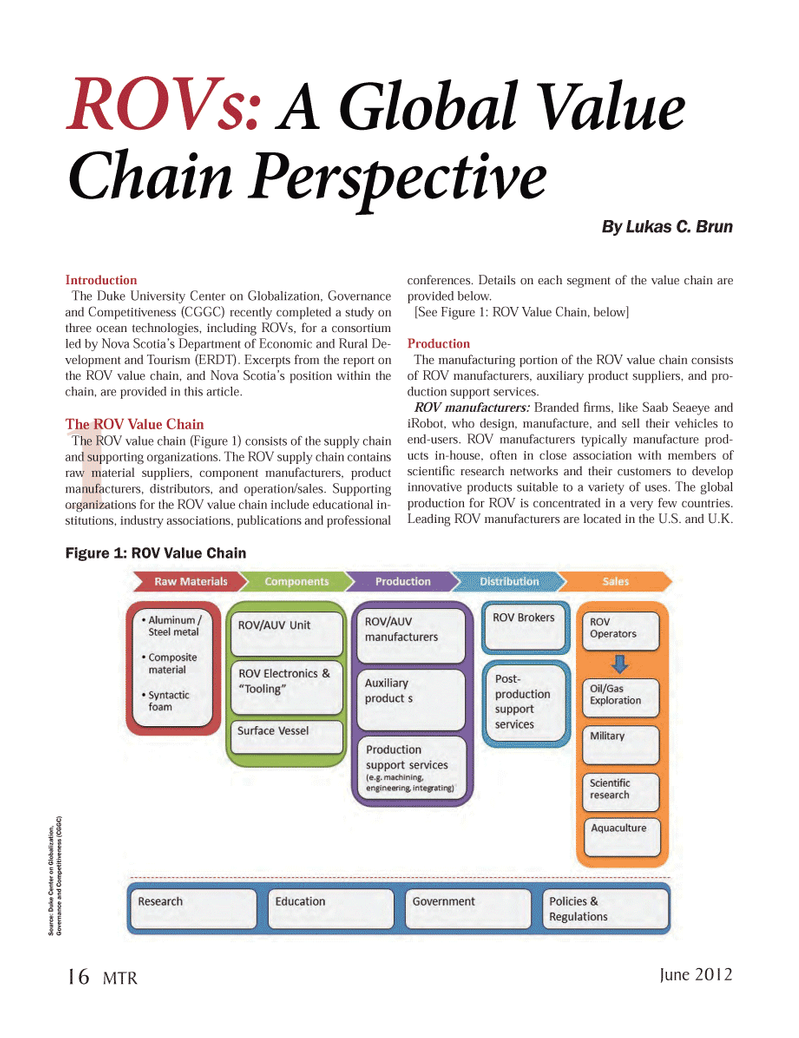
Page 16: of Marine Technology Magazine (June 2012)
AUV Arctic Operations
Read this page in Pdf, Flash or Html5 edition of June 2012 Marine Technology Magazine
1Introduction The Duke University Center on Globalization, Governance and Competitiveness (CGGC) recently completed a study on three ocean technologies, including ROVs, for a consortium led by Nova Scotia?s Department of Economic and Rural De- velopment and Tourism (ERDT). Excerpts from the report on the ROV value chain, and Nova Scotia?s position within the chain, are provided in this article. The ROV Value Chain The ROV value chain (Figure 1) consists of the supply chain and supporting organizations. The ROV supply chain contains raw material suppliers, component manufacturers, product manufacturers, distributors, and operation/sales. Supporting organizations for the ROV value chain include educational in- stitutions, industry associations, publications and professional conferences. Details on each segment of the value chain are provided below. [See Figure 1: ROV Value Chain, below] Production The manufacturing portion of the ROV value chain consists of ROV manufacturers, auxiliary product suppliers, and pro- duction support services. ROV manufacturers: Branded rms, like Saab Seaeye and iRobot, who design, manufacture, and sell their vehicles to end-users. ROV manufacturers typically manufacture prod- ucts in-house, often in close association with members of scienti c research networks and their customers to develop innovative products suitable to a variety of uses. The global production for ROV is concentrated in a very few countries. Leading ROV manufacturers are located in the U.S. and U.K. ROVs: A Global Value Chain Perspective By Lukas C. Brun June 201216 MTRFigure 1: ROV Value Chain Source: Duke Center on Globalization, Governance and Competitiveness (CGGC) MTR #5 (1-17).indd 16MTR #5 (1-17).indd 166/1/2012 10:34:44 AM6/1/2012 10:34:44 AM

 15
15

 17
17
